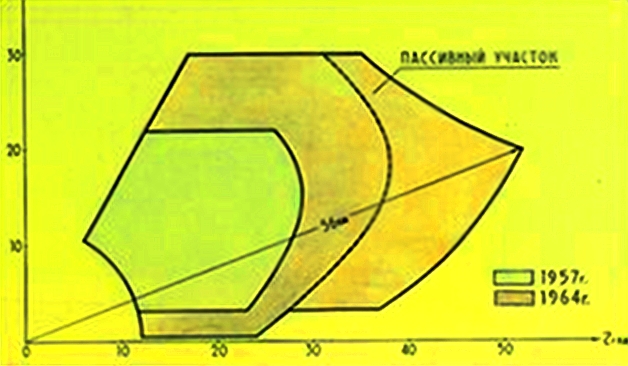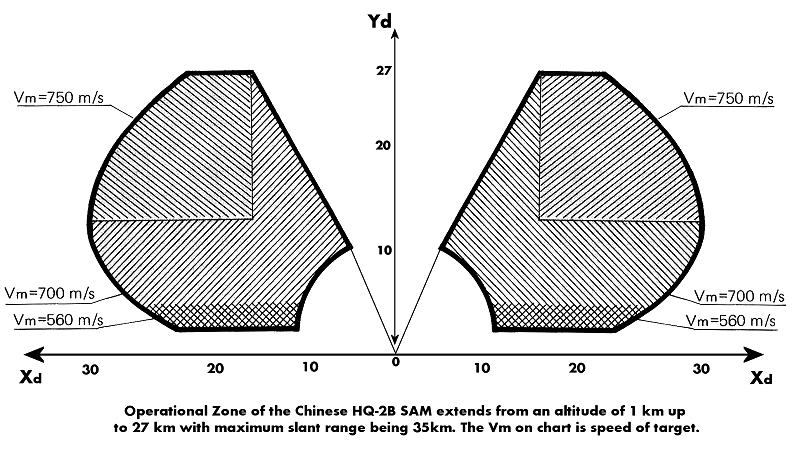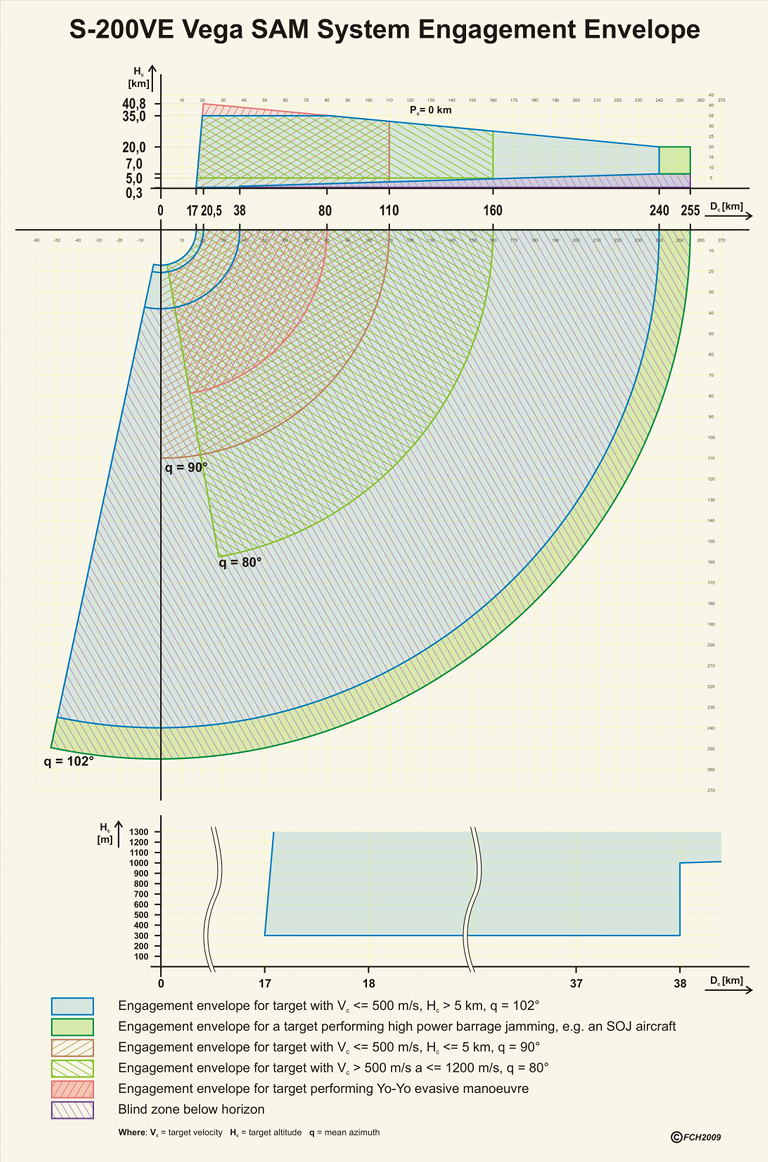Read the forum code of contact
By: - 17th February 2015 at 18:12 Permalink - Edited 1st January 1970 at 01:00
I think you have things confused. Shorter range non-ballistic launch profile SAM missiles have to plow through the atmosphere and will exhibit greater range restrictions than a missile that is able to fly first up to the thinner air and then engages the target on the way down from its zenith. Active homing missiles using mid course updates are very proficient at attacking long range targets at the periphery of their range.
By: - 18th February 2015 at 01:20 Permalink - Edited 1st January 1970 at 01:00
I know that missiles flying in ballistic arcs will have less range restrictions because it can fly in thin air, however, it seem that even for big SAM or AAM fly in ballistic arcs, they still have longer range again high altitude target vs very low altitude target ( even if they climb first to fly in thin air and then come down)

By: - 18th February 2015 at 01:32 Permalink - Edited 1st January 1970 at 01:00
the graph show that SAM achieve longest range again target fly at around 18-22 km ( or 60-65 k feet)
By: - 18th February 2015 at 02:28 Permalink - Edited 1st January 1970 at 01:00
The three dimensional volumes depicted in the graphs are for non-maneuvering targets.
A high, fast target can run a SAM out of energy by a simple change of course. The SAM expends its energy to fly towards a point in space where the airplane is predicted to be. If the airplane changes course, the SAM has to fly to a new point in space (many miles away) to accomplish the intercept and the energy expended before the course change is wasted. By changing course at the right time, the airplane can cause the SAM to run out of energy before the intercept occurs. SR-71 flying at M3 and 75K ft used this technique numerous times.
By: - 18th February 2015 at 02:32 Permalink - Edited 1st January 1970 at 01:00
You're still looking at missiles in a purely ballistic point of view. A missile launched at maximum slant range is ballistically capable of greater reach than the published graph IF the command link can reach to the extreme of that range AND if the active guidance module can get accurate enough of a pass down to acquire the target. More often than not the communications link is the weak point in that scenario. You're already fighting the curvature of the Earth at maximum ranges, the same principles limit communication.
By: - 18th February 2015 at 02:54 Permalink - Edited 1st January 1970 at 01:00
You're still looking at missiles in a purely ballistic point of view. A missile launched at maximum slant range is ballistically capable of greater reach than the published graph IF the command link can reach to the extreme of that range AND if the active guidance module can get accurate enough of a pass down to acquire the target. More often than not the communications link is the weak point in that scenario. You're already fighting the curvature of the Earth at maximum ranges, the same principles limit communication.
i understand that when aircraft fly too low, they can easily hide behind radar horizon , however in this case, for example, radar horizon of an aircraft fly at 20 km can be 600-700 km yet the missile still have much shorter range again target fly at lower altitude

in this case radar horizon also have been taken into account

By: - 18th February 2015 at 04:46 Permalink - Edited 1st January 1970 at 01:00
Are you seeing the yo-yo evasive manuever, where the missile is bleeding energy to maintain direction to target, is shortest? No amount of ballistic flight is going to fix the problem. Also realize each ring displays a different target. An overhead target kills the missile's trajectory, trading it's ending velocity post-boost and post-burn for altitude. So yo-yo manuevers directly over the launcher have a much smaller window of opportunity than a target on ingress towards the launcher. The HQ-2B is a poor chart because both sides assume ingressing target, whereas it would be more helpful to show one side ingress and the other side as the egress.
By: - 18th February 2015 at 07:19 Permalink - Edited 1st January 1970 at 01:00
The three dimensional volumes depicted in the graphs are for non-maneuvering targets.A high, fast target can run a SAM out of energy by a simple change of course. The SAM expends its energy to fly towards a point in space where the airplane is predicted to be. If the airplane changes course, the SAM has to fly to a new point in space (many miles away) to accomplish the intercept and the energy expended before the course change is wasted. By changing course at the right time, the airplane can cause the SAM to run out of energy before the intercept occurs. SR-71 flying at M3 and 75K ft used this technique numerous times.
but fly very fast also so mean really really low turn rate, and your aircraft will cover the distance for enemy's missiles, thus enemy can launched their missile from longer range and the missile itself still dont have to cover the distance
For example, when 2 aircraft ( the first is high supersonic { mach 2} , the second is subsonic {mach 0.8) are 100 km from enemy's fighter or SAM site, both got an aleart of enemy missile launched at the same time, the subsonic aircraft can complete it's turn and ran aways when 99 km from enemy , while the high supersonic aircraft will only complete it's turn circle when 50km from enemy, thus it will go much further inside enemy engagement radius
for example : turn radius of F-14 and Mig-31

i do understand that high speed will reduced missile range significantly in tail on situation though
By: - 18th February 2015 at 07:21 Permalink - Edited 1st January 1970 at 01:00
Are you seeing the yo-yo evasive manuever, where the missile is bleeding energy to maintain direction to target, is shortest? No amount of ballistic flight is going to fix the problem. Also realize each ring displays a different target. An overhead target kills the missile's trajectory, trading it's ending velocity post-boost and post-burn for altitude. So yo-yo manuevers directly over the launcher have a much smaller window of opportunity than a target on ingress towards the launcher. .
sorry, can you explain it a bit clearer, i dont really understand
Posts: 2,014
By: mig-31bm - 17th February 2015 at 16:20
I used to think the higher you fly, the shorter the enemy missiles range is, however according to these 2 graph, it seem that flying high decrease enemy's SAM range but increase their AAM ( if launched from altitude around 13- 15 km) , any explanation to that?


Second question, which will decrease SAM range better? flying at 60 k feet at mach 1.8 or flying at mach 0.5, sea level ( assume radar horizon isnot a problem due to AWACS, and very big SAM like SM-6 or 40ND)